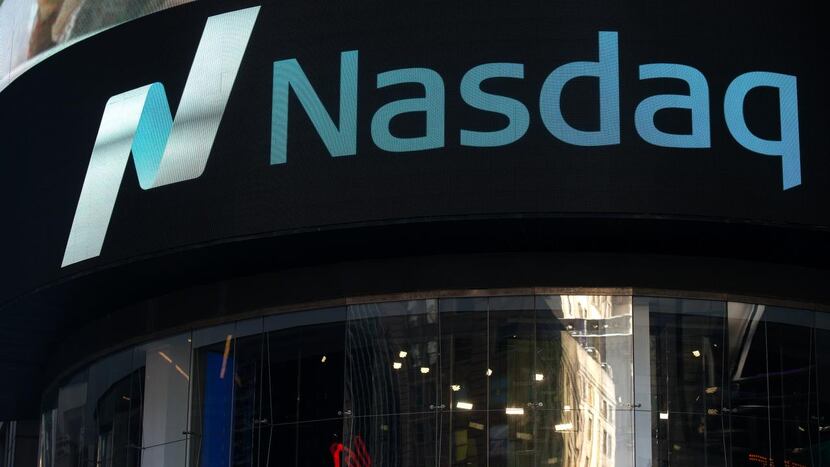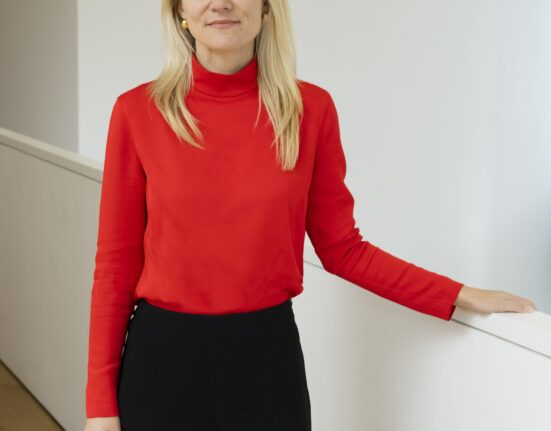The Motley Fool’s Take
Artificial intelligence is a hot topic these days, and many investors expect big profits from the new niche. Still, we can’t know for sure which companies will be the big AI winners in the future — and which will flame out. (Remember how many businesses imploded in the dot-com bust years ago.) Fortunately, there’s a better way to invest in the top AI stocks than simply trying to pick winners at this early stage: exchange-traded funds.
ETFs offer easy diversification. As with a mutual fund, you can own multiple stocks through a single ETF. Among indexes that track the top AI stocks, one worth considering is the Nasdaq-100. It contains the 100 largest stocks on the Nasdaq Composite, with most of its value coming from the tech sector. The “Magnificent Seven” stocks — Apple, Microsoft, Google parent Alphabet, Amazon, Nvidia, Tesla and Facebook parent Meta Platforms — recently made up almost half of the index’s value. All of those stocks are significantly involved in AI, and are leading innovators in the sector.
The Nasdaq-100 has been outperforming the S&P 500 this year, as it’s heavily weighted to innovative technology companies such as those above. It also looks like a better investment than ETFs focused more exclusively on AI. Consider investing long-term dollars in it via the Invesco Nasdaq-100 ETF.
Ask the Fool
From R.T. of Erie, Colo.: Is a company’s “float” the same as its outstanding shares?
The Fool responds: Not quite. The float, or floating stock, refers to just those shares that are available in the open market — not those held by insiders and controlling investors.
A company’s outstanding shares are all of those now owned by investors and others, such as company executives. (Any shares held in the company’s treasury, such as ones that have been repurchased, are not counted.) Many outstanding shares are traded frequently between buyers and sellers on the open market. Others may be held by insiders or others who don’t plan to sell anytime soon.
Outstanding shares figure in many calculations, such as earnings per share (EPS) and market capitalization.
Note that a company may report both basic and diluted shares as outstanding. The “diluted” figure includes securities that could become shares, such as stock options, warrants and more, but that’s an area that gets complicated fast.
From D.L. of Baton Rouge: I bought shares of a company a few years ago for around $90 each. They’re now trading below $10 per share. I don’t want to sell them for such a big loss, but I’m not sure what to do. Help?
The Fool responds: Look forward, not backward. Don’t focus on the difference between the price you bought at and the current price. Instead, compare the current price to what you think the stock is really worth. If it seems worth more due to your expectations of growth, consider hanging on. If you think the current price is fair or generous, sell. Remember that you can always try to make up what you lost in another, more promising stock.
The Fool’s School
We often underestimate how much money we could save — and put toward paying off debts or investing for college or retirement — by just cutting out some fairly small, regular expenses.
Sure, skipping one fancy coffee drink might save you only $5. But if you love your lattes and have one every weekday, forgoing them would save you around $25 — per week. Over the course of a year, that’s $1,300! Depriving yourself of things you love isn’t a great way to live, though, so maybe only skip every other one, for more than $600 in savings.
Similarly, if you have a lot of meals delivered each week, consider cutting back. Let’s say that delivery costs you $50 more each time than eating in, on average, and that you order three meals per week. Reduce that to twice a week, and you’ll save $50 times 52, or $2,600! Another option is to go pick up the food and save $20 on delivery tips and fees each time.
Then there’s smoking, which has gotten very expensive, with packs costing between around $6 and $12 apiece, depending on where you live. If you smoke a $9 pack a day, that’s $3,285 per year. Imagine not spending that for the next decade: You’d keep more than $30,000 in your pocket.
Each of us has different things we might save money on. Take some time to track where your dollars go. Scrutinize your credit card and bank statements, and list every regular expense. Then see which ones you could most easily do without or at least cut back on.
You might even discover some regular expenses you didn’t realize you’re still paying — such as a $35-per-month membership for a gym you don’t use. Ending that expense would save $420 per year.
Changing other habits can save a lot of money, too. For example, instead of going out frequently with friends or your partner, try some game nights at home. A little exploration and a lot of determination might save you $1,000 or more annually.
My Dumbest Investment
From D.B.: Warren Buffett’s business partner, Charlie Munger, is reported to have said: “If you think your IQ is 160 but it’s 150, you’re a disaster. It’s much better to have a 130 IQ and think it’s 120.” I wish I’d heard this wisdom earlier.
Back in 1999, dot-com mania was in full swing. I was in high school and had been investing in stocks for a while with money earned from mowing lawns and other activities. Believing I was on the cusp of making the next great internet fortune, I started buying shares of Xoom, a provider of free websites and clip art (not the digital money transfer business acquired by PayPal).
I studied its financial reports. Revenue was modest, but I somehow convinced myself that the money-losing business would grow enough to warrant a market value 60 times as high. It didn’t. I lost nearly 50% of my investment.
I learned many valuable lessons from this experience: Don’t let overconfidence take over your portfolio or any aspect of your life. I let favorable results in an extreme bull market fool me into thinking I was a better investor than I was. Also, diversification is a safety mechanism worth implementing in a portfolio.
The Fool responds: Periods of stock market mania have led many to jump into overvalued stocks with great — and unfounded — confidence. You’re lucky to have learned these lessons early.
Who Am I?
I trace my roots back to 1886, when a traveling book salesman started recruiting women to sell fragrances he mixed. My first name was the California Perfume Company, and my current name debuted in 1929. I began selling jewelry in 1971. Thanks to my catalogs, in 2005 I was the second-largest publisher in the U.S. (after TV Guide). I’m a longtime champion of gender equality and women’s well-being and have donated more than $1 billion to women’s causes. Today I’m owned by the Brazilian business Natura & Co, which also owns The Body Shop. Who am I?
Don’t remember last week’s question? Find it here.
Last week’s answer: Krispy Kreme






